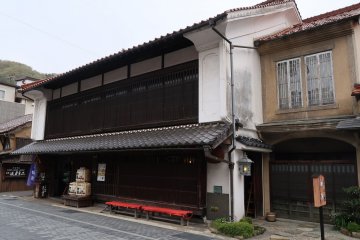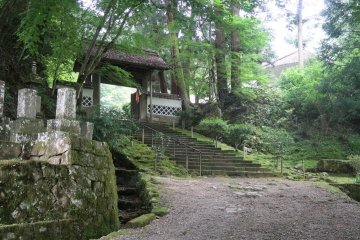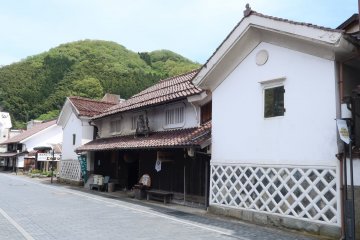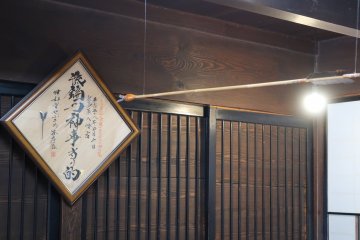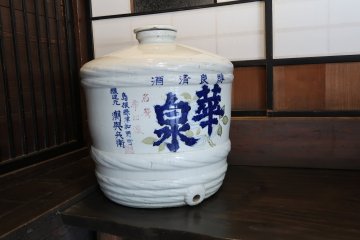During the Edo period (1600-1868), Tsuwano domain boasted crystal clear rivers that could support sake brewing, Japanese washi, (paper), making and wasabi growing. From the three remaining breweries still in business the Kasen Sake Brewery is the oldest in the former Tsuwano domain (now currently Tsuwano and Masuda).
This sake brewery is said to be the 3rd oldest and still operating in the whole of Shimane Prefecture. The ancestors of the current owner were a successful rice dealing family of the Tsuwano domain. In 1730, the head of the family Chouhichi TAWARAYA purchased this sake brewery and a connected pawn shop for 3 Gin-kan, (in modern money about 4 million yen). Since that time, the sake brewery was passed down from father to son, refined, developed and cherished as a tradition.
Today, the head of the family (now 10th generation), together with his son who works as a Touji (chief brewer), are doing their best to preserve this 288 year old tradition. However, preserving this tradition alone is not enough. To meet the needs of new generations, they have embarked upon a journey of developing different tastes. These include more fruity flavors, not just for the sake (fermented rice drink), but for other types of liquors too.
One of the sake-gura (sake storehouse), is used as an art gallery for events, except during the sake brewing season. The shop is also a supporter of the Washibara Hachimangu horse archery festival of Tsuwano. This event has targets and arrows on display.
The current building was built at the beginning of the Meiji Period (1868-1912), and is a Registered Tangible Cultural Property. This is the only building on the main street with two kura storehouses. The style of the roof is called kirizuma-zukuri with pantile roof tiles and a smaller roof attached along the facade of the building.The first floor has a big white facade and three mushi-ko-mado style windows. On both sides, one can see sode-udatsu, which are small walls jotting out of the surface. These were built to prevent the spreading of fire from neighboring buildings.
Local sake is also produced in a similar tradition at the Furuhashi and Zaima breweries.
Mame-chishiki: Small trivia of the day
During the sake brewing season, one can see fresh sugi-tama hanging from the eaves of the shops. These big ball like objects are made from Japanese cedar and play an important role for sake enthusiasts. Some people like aged sake and some people prefer fresh brewed sake. The sugi-tama is first put out when a new batch of sake is done and with time, it slowly dries and withers away, gradually changing color. A sake enthusiast can "read" the sugi-tama, and time their purchase according to it.



